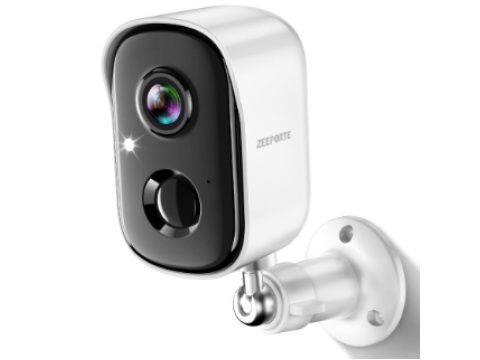Home Security Cameras: A Guide to Choosing the Right System
Setting up a home surveillance system is essential for security and peace of mind. From indoor monitoring to outdoor security, selecting the right camera depends on your specific needs, budget, and home layout.
Types of Home Surveillance Cameras
Analog Cameras
- Simple and reliable for wired setups.
- Ideal for budget-friendly and straightforward home surveillance.
IP (Network) Cameras
- Offer remote access via the internet.
- Suitable for setups requiring advanced features, such as live streaming.
Wireless Cameras
- Operate via WIFI, eliminating the need for extensive wiring.
- Perfect for flexible and mobile installations, though signal range can be limited.
Hidden Cameras
- Compact designs for discreet monitoring.
- Useful for specific areas but may have legal restrictions.
Outdoor Cameras
- Weather-resistant and robust for monitoring yards and driveways.
- Equipped with features like infrared (IR) night vision for round-the-clock surveillance.
Home Cameras with Recording Features
Recording is a vital aspect of surveillance, enabling you to store and review footage when needed.
Recording Options
Memory Cards (Flash Storage)
- Convenient for compact setups.
- Best suited for single-camera installations or short-term storage.
Hard Drives (HDD)
- Supports extensive data storage for multi-camera systems.
- Ideal for homes requiring continuous and long-term recording.
Benefits of Cameras with Built-In Recording
- Flexibility: Suitable for areas without a wired connection.
- Cost-Efficiency: Eliminates the need for external storage devices.
- Discreet Monitoring: Enables hidden surveillance without extra equipment.
Note: Cameras with flash storage typically have limited storage capacity, which may not suffice for extended recording needs.
Key Features to Consider for Home Cameras
Resolution:
- Analog: 500–600 TVL (standard resolution).
- Digital: At least 1.2 megapixels for clear visuals.
Lens Type:
- Choose based on the required field of view and focus.
- Pin-hole lenses are excellent for hidden installations.
Durability:
- Opt for weatherproof and vandal-resistant models for outdoor use.
Recording Duration:
- Ensure compatibility with large-capacity storage for long-term needs.
Installation Tips for Home Surveillance Systems
Indoor Cameras
- Place cameras in corners for maximum coverage.
- Ensure they blend seamlessly with interior designs to maintain aesthetics.
Outdoor Cameras
- Install at strategic entry points such as gates, garages, and patios.
- Use sturdy mounts to protect against environmental factors.
Hidden Cameras
- Ensure the installation complies with local privacy laws.
- Conceal wiring and power sources for effective camouflaging.
Conclusion
Selecting the right home security cameras involves understanding your security requirements and available options. From simple analog systems to advanced IP and wireless solutions, choose the technology that balances performance and budget while ensuring comprehensive home protection.

